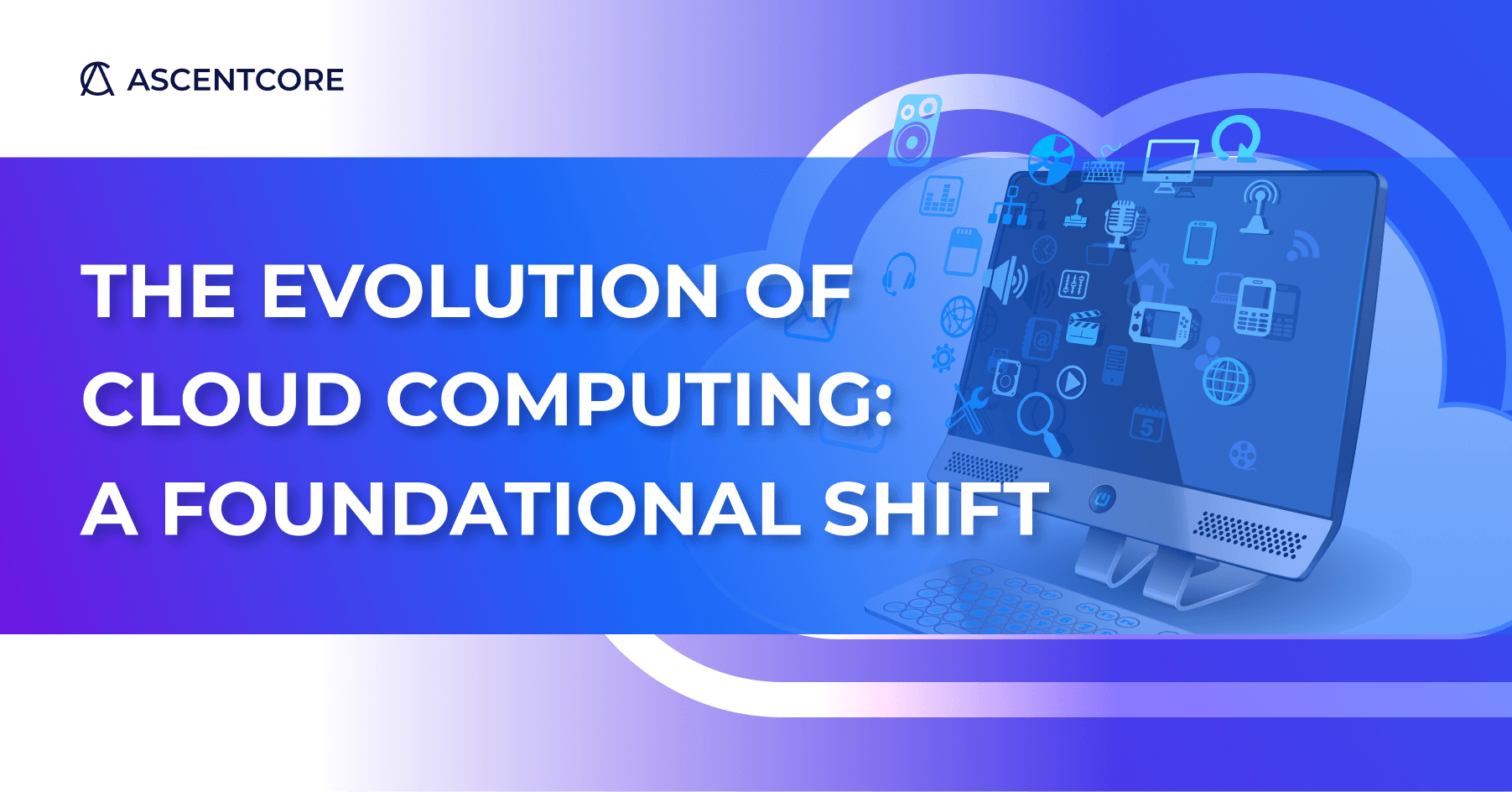In less than a decade, cloud computing has evolved from a cutting-edge innovation to one that has become ubiquitous in technology infrastructure. As cloud solutions become more accessible and affordable, they have transitioned from being leveraged as strategic advantages to standard utilities or commodities for most enterprises.
Keep reading as we explore this evolution from luxury to commodity and the related opportunities, challenges, and changing strategies that come along with it.
A brief history of cloud computing
The origins of cloud computing can be traced back to the 1950s, with the emergence of mainframe computers accessed remotely by terminals. This laid the foundation for the idea of centralized computing resources accessible over a network, a concept that would later evolve into cloud computing. With the widespread adoption of the internet in the 1990s, the door opened for significant advancements in cloud computing, including the offering of web-based applications and storage solutions.
The early 2000s saw the rise of companies offering cloud computing services, with Amazon Web Services leading the way with the launch of Amazon Elastic Compute Cloud in 2006. This marked a significant milestone in the evolution of cloud computing, as it provided businesses with on-demand access to computing resources without the need for upfront investment in infrastructure. As cloud computing matured, the range of services offered by cloud providers expanded rapidly. From infrastructure-as-a-service (IaaS) and platform-as-a-service (PaaS) to software-as-a-service (SaaS) and beyond, cloud providers now offer a vast array of services catering to diverse needs and use cases.
The democratization of computing power
One of the most transformative aspects of cloud computing has been its democratizing effect on computing power. Small businesses and startups gained access to the same powerful computing resources previously available only to large enterprises, leveling the playing field and fostering innovation. This democratization has fueled the growth of the digital economy and empowered individuals and organizations to pursue their creative and entrepreneurial endeavors.
It has also brought unique challenges for businesses looking to differentiate themselves in an increasingly crowded marketplace. With countless providers offering similar services, standing out from the competition has become increasingly difficult.
Shifting models in cloud computing
With such a tectonic shift in the accessibility and ubiquity of cloud computing, models for pricing, service offerings, and implementation strategies must also shift. Gone are the days of cumbersome on-premises infrastructure, limited storage capacity, and outsized pricing. The competitive nature of the cloud market means that service providers must continuously innovate and optimize their offerings to attract and retain customers. This drives down prices while simultaneously improving service quality and performance. As a result, businesses can leverage cutting-edge technologies without breaking the bank.
This proliferation of service offerings has also led to providers offering tailored services to meet customer needs and preferences. Whether it’s solutions for industries like healthcare and finance or general-purpose platforms catering to a broad range of applications, the cloud ecosystem offers a range of previously unavailable options. Additionally, the emergence of niche players and startups has intensified competition and led to the development of niche-specific tools and services that address unique challenges faced by various industries.
We mentioned earlier that the ubiquity of cloud computing makes market differentiation difficult, and commoditization is one of the primary obstacles to differentiation. As cloud services become standardized, competing solely on features and pricing becomes unsustainable, and instead, businesses must focus on delivering unique value propositions that resonate with their target audience. Additionally, the lack of physical infrastructure in the cloud diminishes traditional points of differentiation, such as data center size or geographic location. In this virtual landscape, a company’s differentiation is based on factors such as performance, reliability, security, and customer service.
To differentiate themselves in the cloud computing market, businesses must adopt a multi-faceted approach that goes beyond technical capabilities.
Looking ahead to the future
The evolution of cloud computing has been nothing short of remarkable, transforming the way we live, work, and interact with technology. From its humble beginnings to its current state of ubiquity, cloud computing has revolutionized the industry and empowered individuals and organizations worldwide. As we continue to navigate the ever-changing landscape of technology, one thing is certain: the cloud will remain a central pillar of the digital age, driving innovation and shaping the future of computing for years to come.














